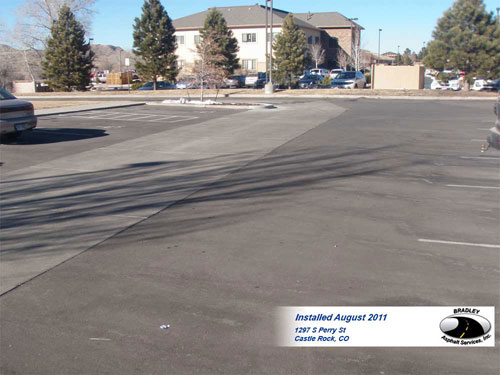Removal and Replacement
If an asphalt surface has been neglected and water infiltration through cracks and holes have begun to undermine the substrate, the most effective form of repair would then be to remove and replace it.
This is the most extreme rehabilitation process there is and is only needed in cases where the existing pavement system is completely unusable due to old age, neglect or change of use.
The cost for such work depends upon the geographic location, the amount of grading and substrate work required, and other site-specific factors.
To avoid the expenses involved with asphalt removal and replacement, it is generally prudent to maintain a pavement maintenance plan that includes timely crack sealing, sealcoating and patching.
Removal and Replacement Procedure
● Saw Cut/jackhammer the perimeter of the area/areas to be repaired.
● Excavate the failed asphalt out and haul away the spoils.
● Re-grade and re-compact existing soil/road base.
● Clean the existing asphalt edges and tack coat (glue) them to bond the new asphalt to the existing pavement.
● Lay new hot asphalt mix, to be rolled and compacted.
Please Note: There might be some exceptions to the Removal and Replacement Procedure as listed below.
If you have some unstable soil in an area/areas they might have to be over excavated, soil hauled away, and some road base be brought in, rolled and compacted prior to paving.
Most parking lots are 3 to 4 inches thick, unless there were some special requirements and the asphalt was laid thicker.
If you have a commercial parking lot with a lot of heavy vehicle traffic such as semis with trailers, large delivery trucks, trash trucks etc. you may want 5 or 6 inches of asphalt in any failed areas for added strength to minimize any damage in the future.

This parking lot was patched and repaired in August 2011.
Date of Photo 1-2013.




